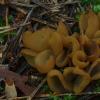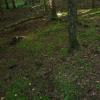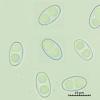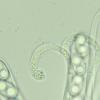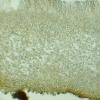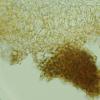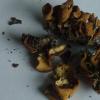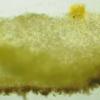
09-01-2026 17:41
Arnold BüschlenHallo, F. dilatata wird von vielen Bryoparasiten

10-01-2026 20:00
Tom SchrierHi all,We found picnidia on Protoparmeliopsis mur

07-01-2026 22:22
 Danny Newman
Danny Newman
Tatraea sp. on indet. hardwood The Swag, Great Sm

10-01-2026 01:18
 Danny Newman
Danny Newman
cf. Neovaginatispora fuckelii on indet. shrub Pre

07-01-2026 10:24
 Danny Newman
Danny Newman
Pezicula sp. on indet. hardwood Appalachian Highl

09-01-2026 10:08
 Blasco Rafael
Blasco Rafael
Hola, en el mismo habitat que la anteriorRetamaDia

08-01-2026 21:22
 Blasco Rafael
Blasco Rafael
Hola, He recogido esta muestra de Orbilia sobre Re

07-01-2026 17:29
 Marc Detollenaere
Marc Detollenaere
Dear Forum,On a barkless Populus I found some smal

10-11-2021 17:33
 Riet van Oosten
Riet van Oosten
Add-on topic http://www.ascofrance.com/forum/7059

07-01-2026 10:05
 Danny Newman
Danny Newman
cf. Chaetospermum on XylariaCosby Campground, Grea
Spore measurements (spore print in water):
(10) 10.5 - 11.9 (14) × 6.2 - 6.9 (8.8) µm
Q = (1.5) 1.6 - 1.78 (1.8) ; N = 20
Me = 11.2 × 6.6 µm ; Qe = 1.7
Tips of paraphyses up to 6 µm wide.
I tried to figure out the species with the aid of the Otidea monograph but didn't come to any certain conclusion. My best guess is O. nannfeldtii and second one O. formicarum.
O. nannfeldtii apparently likes to grow on nutrient-rich, often calcareous soil. This place seemed to be acidic though, not nutritious.
O. formicarum typically grows on old ant hills but apparently can also grow on just needle debris. Maybe the dark warts on the outer surface speak against it? I haven't seen any pics or descriptions that include them for that species.
The last two microphotos are from a dried fruitbody in 3 % KOH.

I think the ectal excipulum (cell walls) became yellow in KOH, did you consider O. tuomikoskii? In some collections, this reaction can disappear again in ca. 20 seconds, in others it stays. Also the intensity and placement of the yellow staining is variable. In nannfeldtii the surface exudates turn reddish brown, and it should have two-layered medulla (although I have a DNA-confirmed collection of nannfeldtii with 1-layered medulla too).
Cheers,
Viktorie
Because of the small size and lack of noticing the yellowing, I didn't consider O. tuomikoskii but with this new info I think you are correct! The ecology would also fit better, this one is apparently much more common and less demanding of habitat that O. nannfeldtii.
Thank you.
